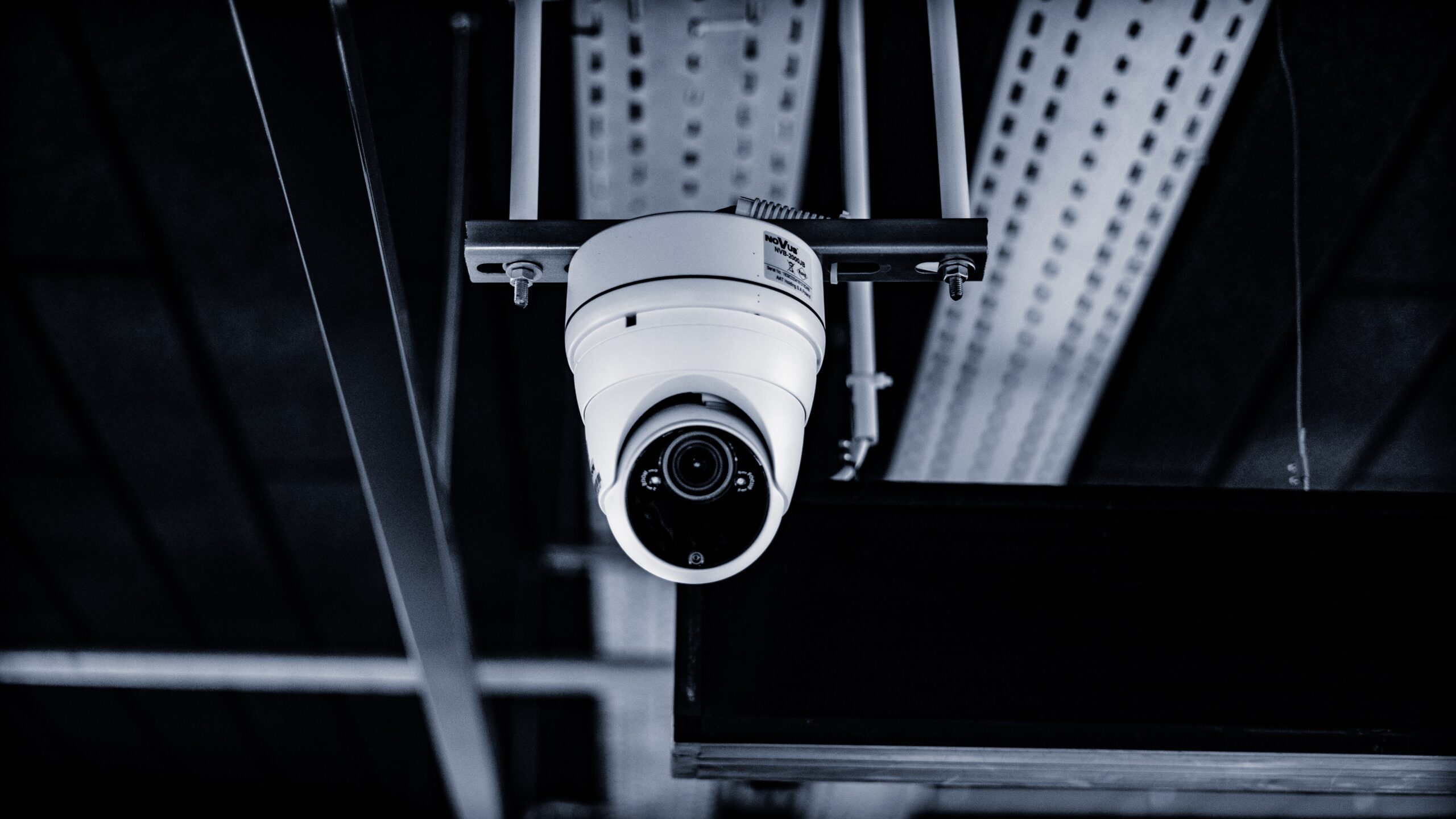Key Takeaway:
- Physical security is crucial in the digital world: Safeguarding data centers, offices, and hardware is essential to protect sensitive information from physical threats such as theft, vandalism, and natural disasters.
- Implementing physical security controls in data centers is vital: Data centers house critical infrastructure and contain valuable data. Utilizing access control systems, surveillance cameras, and intrusion detection systems can help prevent unauthorized access and ensure the security of the data center.
- Fire protection systems and infrastructure design are key for data center protection: Data centers require robust fire protection systems, including fire suppression systems and fire-resistant construction materials. Proper infrastructure design, including redundant power and cooling systems, is also important to minimize downtime and maintain data center security.
Introduction
Physical Security in the Digital Sphere: Safeguarding Data Centers, Offices, and Hardware Data centers, office spaces, and hardware are critical assets that require robust physical security measures to protect against unauthorized access, theft, and potential breaches. In today’s digital world, it is paramount to ensure the safety and integrity of these resources. To safeguard data centers, organizations deploy stringent security protocols, including access controls, surveillance systems, and alarm systems. These measures restrict entry to authorized personnel only and enable monitoring and detection of any suspicious activity. Additionally, physical barriers such as fences, gates, and secure entry points fortify the premises against external threats. The security of office spaces is equally important. Implementing access control systems, such as key cards or biometric authentication, prevents unauthorized entry and safeguards sensitive information. Alongside this, organizations may employ security personnel, install CCTV cameras, and utilize intrusion detection systems to provide an extra layer of protection. Protecting hardware assets is crucial to prevent theft or tampering. Employing physical locks, safes, and cabinets ensures that valuable equipment remains secure. Regular inventory audits and asset tracking systems help mitigate the risk of loss or misuse. Furthermore, organizations must train employees on security protocols and conduct regular security awareness programs to enhance the overall safety of their digital infrastructure. This includes educating employees on the significance of strong passwords, the dangers of phishing attacks, and the proper handling of sensitive information. Pro Tip: Regularly assess and update physical security measures to align with evolving threats and technological advancements. Additionally, conduct periodic vulnerability assessments to identify potential weaknesses and address them proactively.
Understanding Physical Security in the Digital World
Physical Security in the Digital World: Safeguarding Data Centers, Offices, and Hardware In today’s digital landscape, it is crucial to comprehend the importance of physical security. Understanding the measures required to safeguard data centers, offices, and hardware is essential for protecting valuable information. By implementing rigorous access controls, video surveillance systems, and intrusion detection systems, organizations can maintain the integrity of their digital assets. It is vital to realize that physical security forms a fundamental aspect of overall cybersecurity strategies. Neglecting this aspect can lead to devastating consequences, including unauthorized access, theft, and data breaches. Therefore, organizations must prioritize the implementation of robust physical security measures alongside their digital protection efforts. To ensure maximum protection, it is imperative to secure the physical premises where data centers, offices, and hardware are located. This involves using advanced authentication methods such as biometric access controls and RFID cards to restrict entry to authorized personnel only. Additionally, video surveillance systems installed throughout the facility can act as a deterrent and provide valuable evidence in case of any security incidents. Integrating intrusion detection systems with alarm notifications can further enhance security by promptly alerting staff to any unauthorized access attempts. Regular security audits and training programs ensure that employees remain vigilant and follow proper security protocols to mitigate risks effectively. While implementing security measures is crucial, it is equally important to regularly evaluate and update these protocols to stay ahead of emerging threats. Organizations should periodically conduct risk assessments and vulnerability tests to identify any weaknesses in their physical security systems. This will enable them to address vulnerabilities promptly and proactively strengthen their defense strategies. By fostering a culture of security awareness and continuous improvement, organizations can create a robust physical security framework that complements their digital security efforts effectively. In a true story that highlights the importance of physical security, a major financial institution recently faced a significant security breach due to a lack of emphasis on physical safeguards. Despite implementing robust cybersecurity measures, the organization failed to install adequate physical security protocols. This allowed an unauthorized individual to gain access to the data center, resulting in a massive data breach. The incident served as a wake-up call for the institution, prompting them to reevaluate their security practices and invest in comprehensive physical security measures. This story underscores the critical role physical security plays in protecting digital assets and emphasizes the need for organizations to prioritize it alongside their digital security efforts.
The Importance of Physical Security Controls in Data Centers
In today’s digital world, safeguarding data centers with physical security controls is of utmost importance. These controls play a critical role in ensuring the protection and integrity of sensitive information and hardware. By implementing measures such as access control systems, surveillance cameras, and biometric authentication, organizations can effectively prevent unauthorized access and mitigate potential security breaches. Data centers are the lifeline of any organization, housing crucial information and infrastructure. Without robust physical security controls, these facilities become vulnerable to various threats, including theft, vandalism, and unauthorized access. By investing in measures such as secure perimeter fencing, security personnel, and restricted access areas, organizations can create a secure environment for their data centers. Additionally, physical security controls also play a crucial role in preventing insider threats. By implementing strict access control policies, organizations can ensure that only authorized personnel have access to the data center. This helps in minimizing the risk of internal breaches and ensures that sensitive data remains protected. Pro Tip: Regularly reviewing and updating physical security measures is essential to ensure their effectiveness. Conducting periodic risk assessments and staying updated with the latest security technologies can help organizations stay one step ahead of potential threats.
Protecting Data Centers: Fire Protection Systems and Infrastructure Design
Protecting Data Centers: Enhancing Fire Safety Measures and Infrastructure Design
Data centers require robust fire protection systems and carefully engineered infrastructure design to safeguard critical information and hardware. By implementing advanced fire detection and suppression technologies, such as early warning systems and automatic sprinkler systems, data centers can effectively mitigate fire risks. Additionally, infrastructure design considerations include compartmentalization, fire-resistant materials, and evacuation routes to minimize fire spread and optimize occupant safety. It is crucial to prioritize fire protection measures in data centers to prevent data loss, equipment damage, and potential business interruption.
Moreover, regular maintenance, inspections, and testing of fire protection systems should be performed to ensure their continued effectiveness. This includes monitoring and updating fire suppression systems, electrical distribution systems, and cooling systems to address potential hazards and maintain optimal functioning. Fire drills and staff training also play a vital role in preparing employees for emergency situations, ensuring prompt response and effective evacuation.
Furthermore, investing in advanced fire protection systems not only safeguards data centers and equipment but also instills confidence among clients and stakeholders. By demonstrating a commitment to proactive fire safety measures, data centers can differentiate themselves in the market and attract more clients seeking secure and reliable infrastructure. Ignoring or neglecting fire protection can lead to devastating consequences, including catastrophic data loss, financial liabilities, and reputational damage.
To ensure the utmost protection of data centers and the valuable information they hold, it is imperative for organizations to prioritize fire protection systems and infrastructure design. By taking proactive steps, data centers can minimize the risk of fire incidents and ensure the continuity of operations, ultimately providing peace of mind to clients and fostering trust in their services. Stay ahead of potential threats and safeguard your data center with comprehensive fire protection solutions.
Understanding Data Center Tiers: Determining the Right Infrastructure
Understanding Data Center Tiers: Choosing the Correct Infrastructure Data centers play a crucial role in safeguarding digital assets. When it comes to understanding data center tiers and determining the appropriate infrastructure, it is essential to consider various factors. The tier system classifies data centers based on their capabilities, including redundancy levels, availability, and reliability. Each tier represents a different level of resilience and performance. Factors such as uptime requirements, budget, and scalability needs should be taken into account when selecting the appropriate tier. It is important to evaluate the specific requirements of your organization. Tier 1 data centers, for example, offer a basic level of protection and are suitable for small businesses with less critical applications. On the other hand, tier 4 data centers provide the highest level of redundancy and uptime, making them ideal for large enterprises that require continuous operation. To determine the right infrastructure, consider the future growth of your organization. A scalable data center will accommodate expanding needs and avoid costly migration processes. Additionally, assess the level of security and physical protection provided by the data center. Robust security measures, such as surveillance systems and access control, are essential to safeguard sensitive data. Furthermore, consider the level of support and maintenance offered by the data center provider. Regular maintenance and proactive monitoring ensure optimal performance and minimize the risk of downtime. By carefully evaluating your organization’s requirements and considering factors such as scalability, security, and support, you can select the most suitable data center tier and infrastructure for your business needs.
Conclusion
The assessment of physical security measures in the digital world has highlighted the crucial need to safeguard data centers, offices, and hardware. By implementing robust security protocols and technologies, organizations can effectively protect their valuable assets from potential threats. These measures include access control systems, surveillance cameras, alarm systems, and physical barriers. Additionally, regular security audits and employee training play a vital role in maintaining a secure environment. Such efforts not only mitigate the risk of unauthorized access and theft but also ensure the integrity and availability of critical information.
While the previous paragraphs have emphasized the importance of physical security in safeguarding data centers, offices, and hardware, it is essential to acknowledge the dynamic nature of security threats. As technology evolves, so do the methods employed by attackers. Therefore, organizations must remain vigilant and adapt their security measures accordingly to stay one step ahead of potential risks.
A true fact: According to a study conducted by Ponemon Institute, the average cost of a data breach in 2020 was $3.86 million.
Physical Security In The Digital World: Safeguarding Data Centers, Offices, And Hardware
- ✅ Data centers are centralized locations that house computing and networking equipment, including IT equipment and network infrastructure. (Source: Team Research)
- ✅ Data centers store large amounts of data for processing, analyzing, and distributing. (Source: Team Research)
- ✅ Organizations can choose to rent space and networking equipment in off-site data centers instead of owning their own. (Source: Team Research)
- ✅ Physical security in data centers involves protecting the premises and the equipment from natural disasters, theft, terrorism, and other events that could cause damage or loss. (Source: Team Research)
- ✅ Software security in data centers involves preventing unauthorized access to the data stored on the servers and regularly upgrading security techniques. (Source: Team Research)
FAQs about Physical Security In The Digital World: Safeguarding Data Centers, Offices, And Hardware.
What is physical security in the context of data centers and hardware?
Physical security involves protecting people, property, and assets, including hardware, software, network, and data, from natural disasters, theft, vandalism, and other events that could cause damage or loss to a data center or office.
What are some physical security controls implemented in data centers?
Data centers employ various physical security measures, including proximity assessment to high-risk areas, robust access control systems, closed-circuit television (CCTV) camera surveillance, on-site security guards, regular hardware maintenance, temperature and humidity control, uninterruptible power supply (UPS), fire alarm and detection systems, water leakage detectors, rodent repellent systems, and fire protection systems.
What is the purpose of an access control system in a data center?
An access control system ensures the security of a data center by allowing only authorized personnel to enter the facility. It typically features anti-tailgating/anti-pass-back functionality, which prevents multiple individuals from using a single entry card and ensures that only one person enters at a time.
How does closed-circuit television (CCTV) help in maintaining data center security?
Closed-circuit television (CCTV) systems in data centers provide continuous monitoring and recording of activities, enhancing security. They help deter potential threats, provide evidence in case of security incidents, and assist in identifying unauthorized access attempts or security breaches.
What is the purpose of an uninterruptible power supply (UPS) in a data center?
Uninterruptible power supply (UPS) systems are critical for data center operation as they provide backup power in the event of a power outage. They ensure uninterrupted power supply to the servers, networking equipment, and other critical systems, preventing data loss and downtime.
Why are raised floor systems important in data center infrastructure?
Raised floor systems enable efficient routing of cables and chilled-air piping and ducting beneath data center racks. They help maintain a clean and organized environment, reduce heat load, allow for easy access to infrastructure components, and improve overall aesthetics while facilitating better airflow and cooling.




